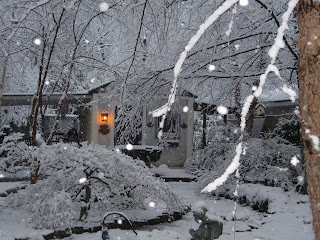If you missed this post last Easter, here is an updated version with new photos.
It seems that Easter bunnies, colored eggs, candy, baked goods, and sunrise services
are another example of pre-Christian pagan traditions retained in newer Christian ones.
For example, according to DNews Editors at this link:
the tradition we call Easter began in the 13th century in pre-Christian Germany
with the worship of the goddess Eostra.
I think Wikipedia explains this connection better
because they have extended quotes from Jacob Grimm,
commonly recognized as the compiler of fairy tales,
but also a philologist, a respected scholar who studied language and learning.
Here is Wikipedia's excerpt from Grimm's 1835 "Deutsche Mythologie":
Ostara, Eástre seems therefore to have been the divinity of the radiant dawn, of upspringing light, a spectacle that brings joy and blessing, whose meaning could be easily adapted by the resurrection-day of the christian's God. Bonfires were lighted at Easter and according to popular belief of long standing, the moment the sun rises on Easter Sunday morning, he gives three joyful leaps, he dances for joy ... Water drawn on the Easter morning is, like that at Christmas, holy and healing ... here also heathen notions seems to have grafted themselves on great christian festivals. Maidens clothed in white, who at Easter, at the season of returning spring, show themselves in clefts of the rock and on mountains, are suggestive of the ancient goddess.
and as for the eggs, candies, and pastries, Grimm writes:
The heathen Easter had much in common with May-feast
and the reception of spring, particularly in matter of bonfires.
Then, through long ages there seem to have lingered among the people
Easter-games so-called, which the church itself had to tolerate:
I allude especially to the custom of Easter eggs,
and to the Easter tale which preachers told from the pulpit
for the people's amusement, connecting it with Christian reminiscences.
Grimm comments on further Easter time customs,
including unique sword dances
and particular baked goods, calling these pastry of heathenish form.
I wonder if Grimm was thinking of something like this
bunny cake. I make it for Easter occasionally
because it reminds me of baking with my mom.
because it reminds me of baking with my mom.
But where is the Easter bunny in this historical perspective?
Here is some information about the egg-bringing bunny
I found on a web site called I Love India (of all places).
The link no longer works, but here is what it said when I accessed it in April 2012:
The link no longer works, but here is what it said when I accessed it in April 2012:
Eostre, the goddess of the dawn and fertility,
found an injured bird one bitterly cold winter, so she changed the bird
into a hare so that it could recuperate better. But the transformed hare retained
some of its true nature--the egg-laying part. After the hare was well again,
it always layed eggs and colored them to give to the goddess as a gift of gratitude.
I like that explanation, and it's as good as any that I've heard.
Much of the Easter tradition is rooted in concepts of fertility, re-birth, and joy.
Much of the Easter tradition is rooted in concepts of fertility, re-birth, and joy.
But whichever tradition you ascribe to,
Easter is a lovely way to mark the new life of spring.
Happy Easter!
<>














